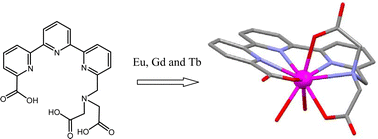A disymmetric terpyridine based ligand for the formation of luminescent di-aquo lanthanide complexes
Abstract
The synthesis of

* Corresponding authors
a
Laboratoire de Chimie Moléculaire, UMR 7509 CNRS, ECPM-ULP, 25, rue Becquerel, Strasbourg Cedex 02, France
E-mail:
charbonn@chimie.u-strasbg.fr
b European Molecular Biology Laboratoty, Grenoble outstation, 6, rue Jules Horowitz, BP 181, Grenoble Cedex 9, France
The synthesis of

 Please wait while we load your content...
Something went wrong. Try again?
Please wait while we load your content...
Something went wrong. Try again?
L. J. Charbonnière, S. Mameri, D. Flot, F. Waltz, C. Zandanel and R. F. Ziessel, Dalton Trans., 2007, 2245 DOI: 10.1039/B700837F
To request permission to reproduce material from this article, please go to the Copyright Clearance Center request page.
If you are an author contributing to an RSC publication, you do not need to request permission provided correct acknowledgement is given.
If you are the author of this article, you do not need to request permission to reproduce figures and diagrams provided correct acknowledgement is given. If you want to reproduce the whole article in a third-party publication (excluding your thesis/dissertation for which permission is not required) please go to the Copyright Clearance Center request page.
Read more about how to correctly acknowledge RSC content.
 Fetching data from CrossRef.
Fetching data from CrossRef.
This may take some time to load.
Loading related content
